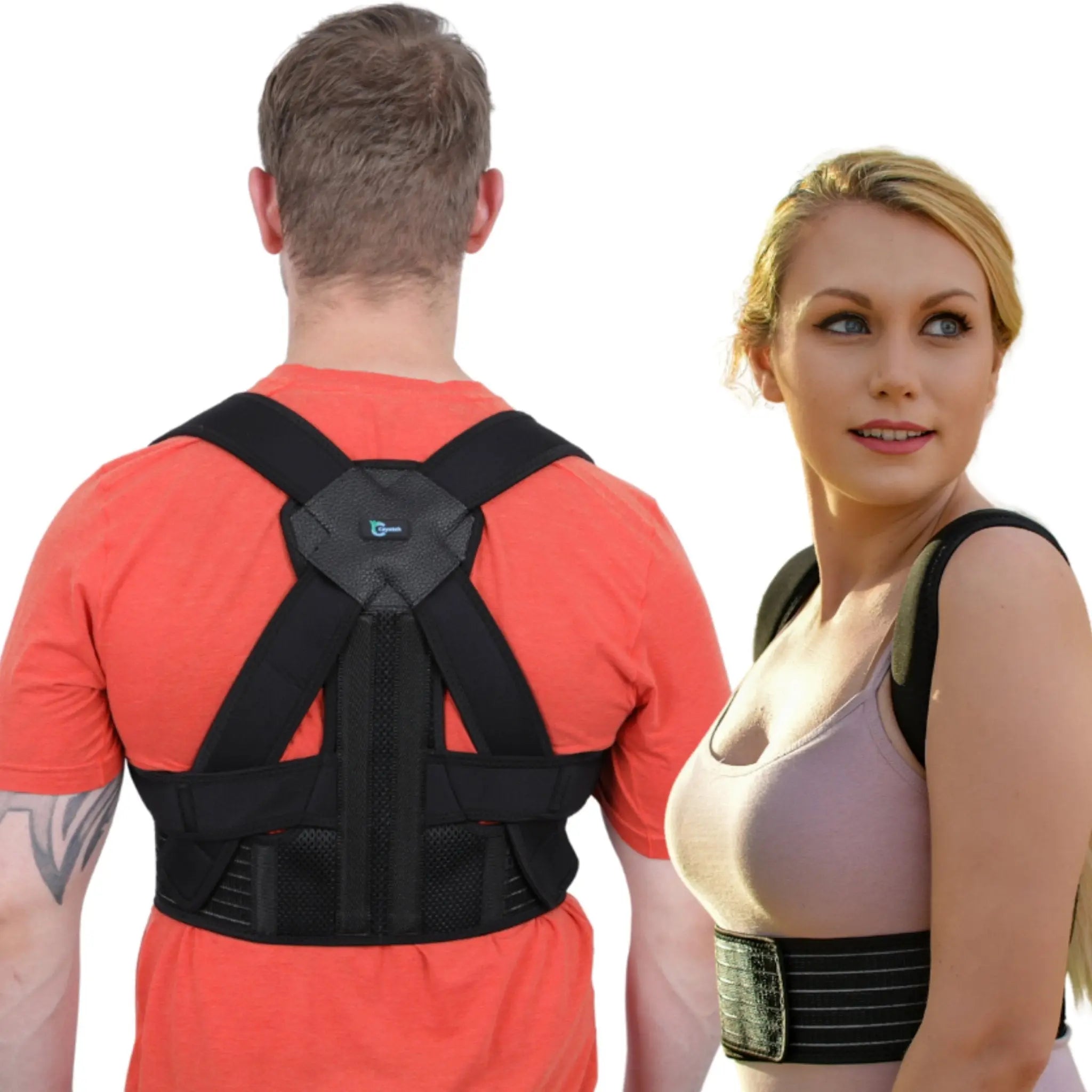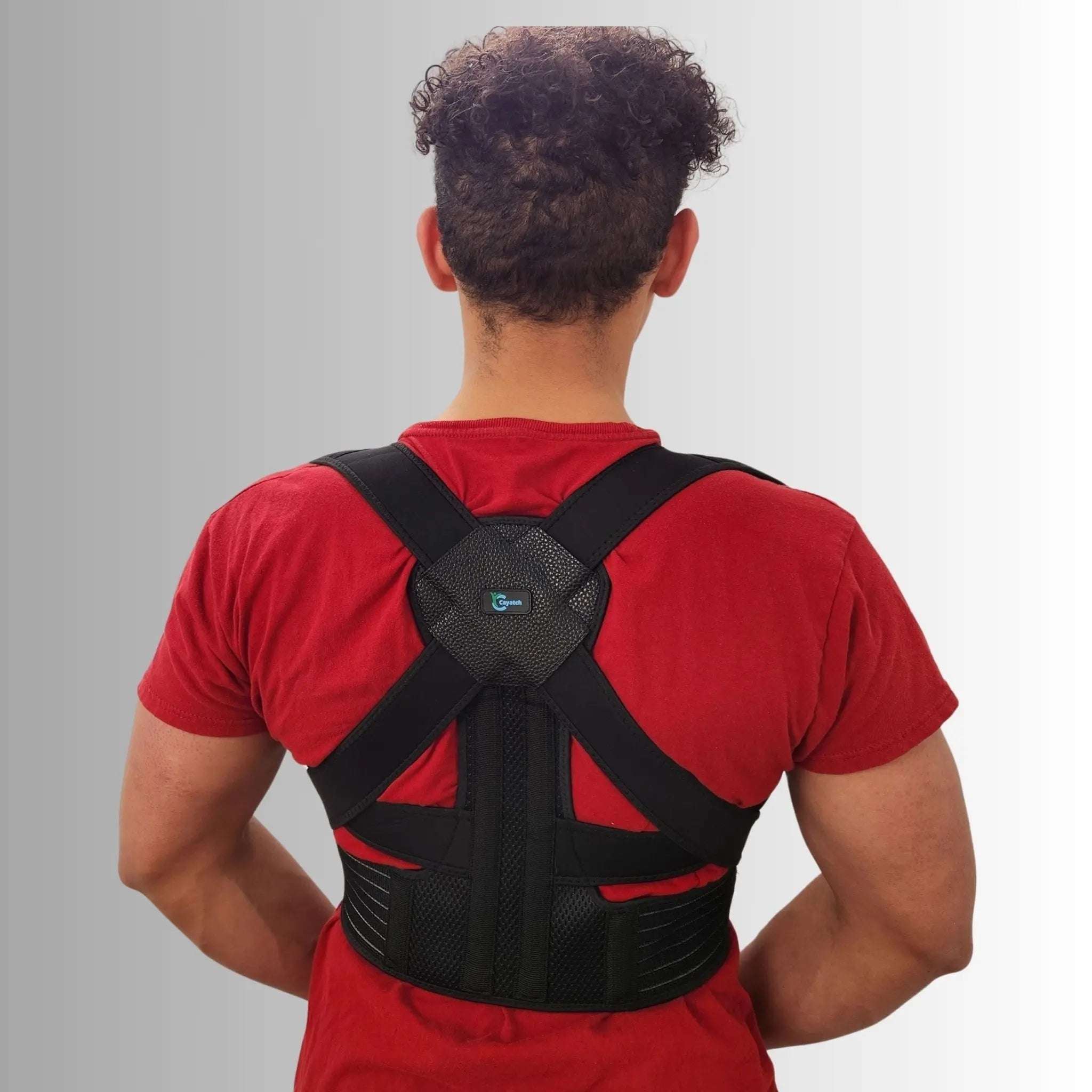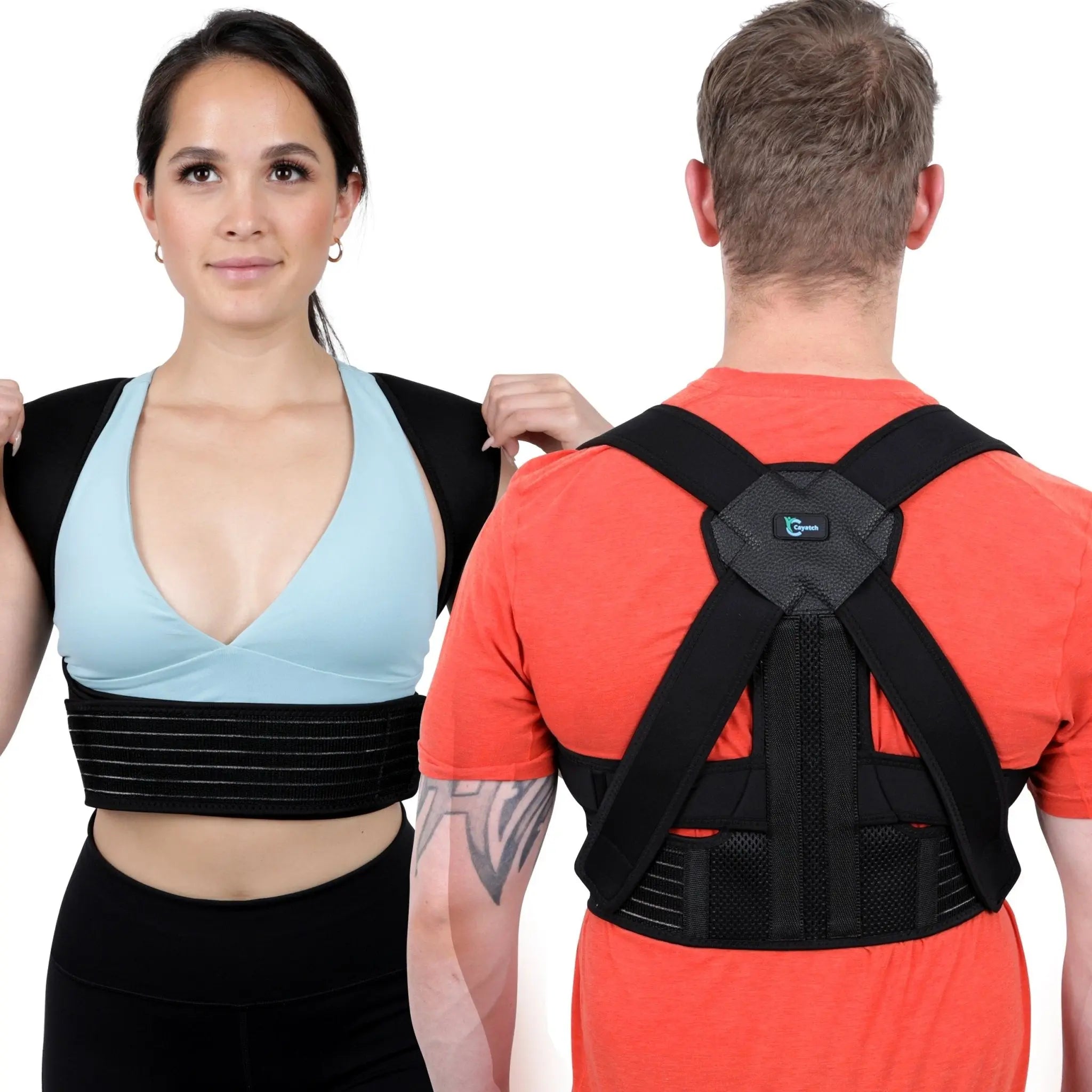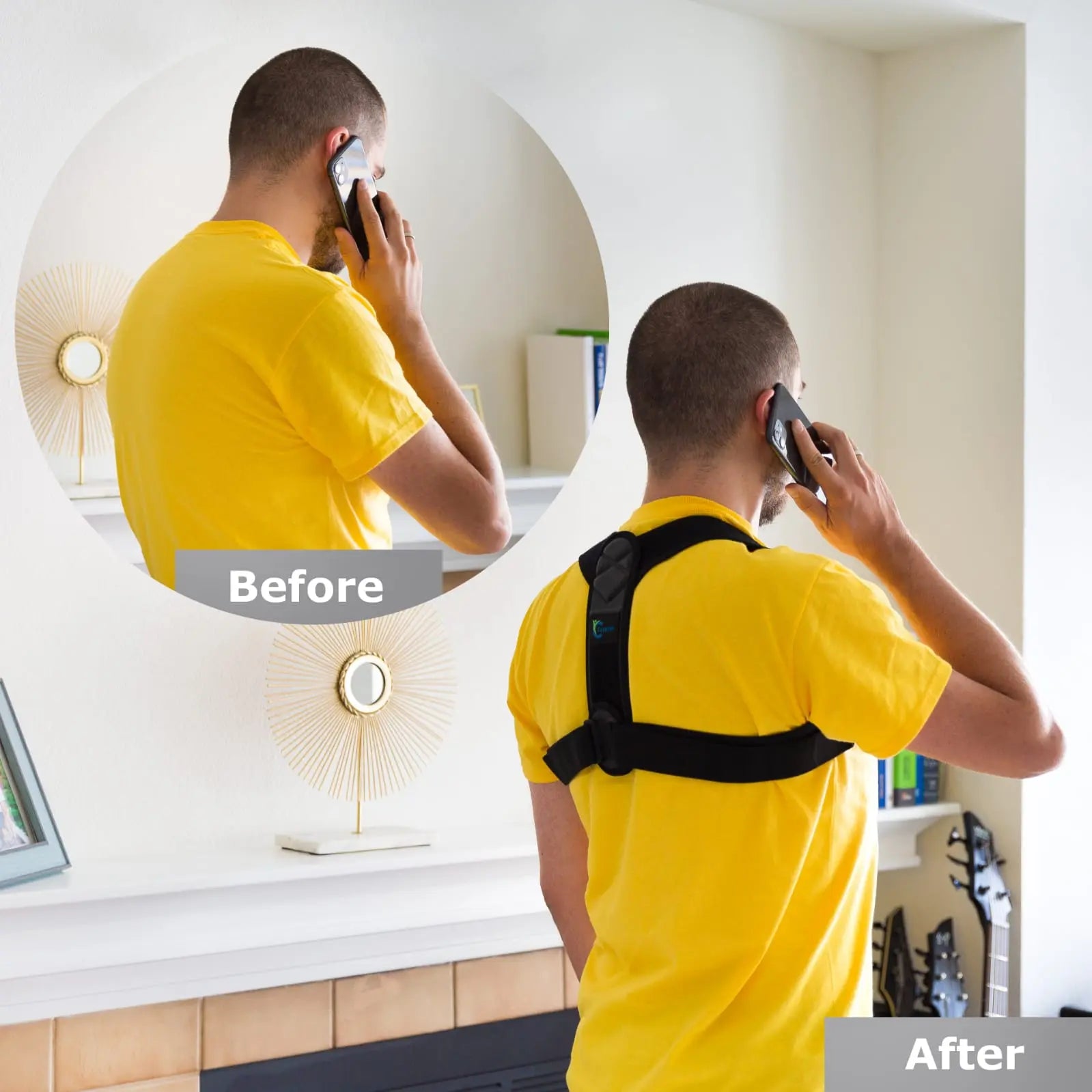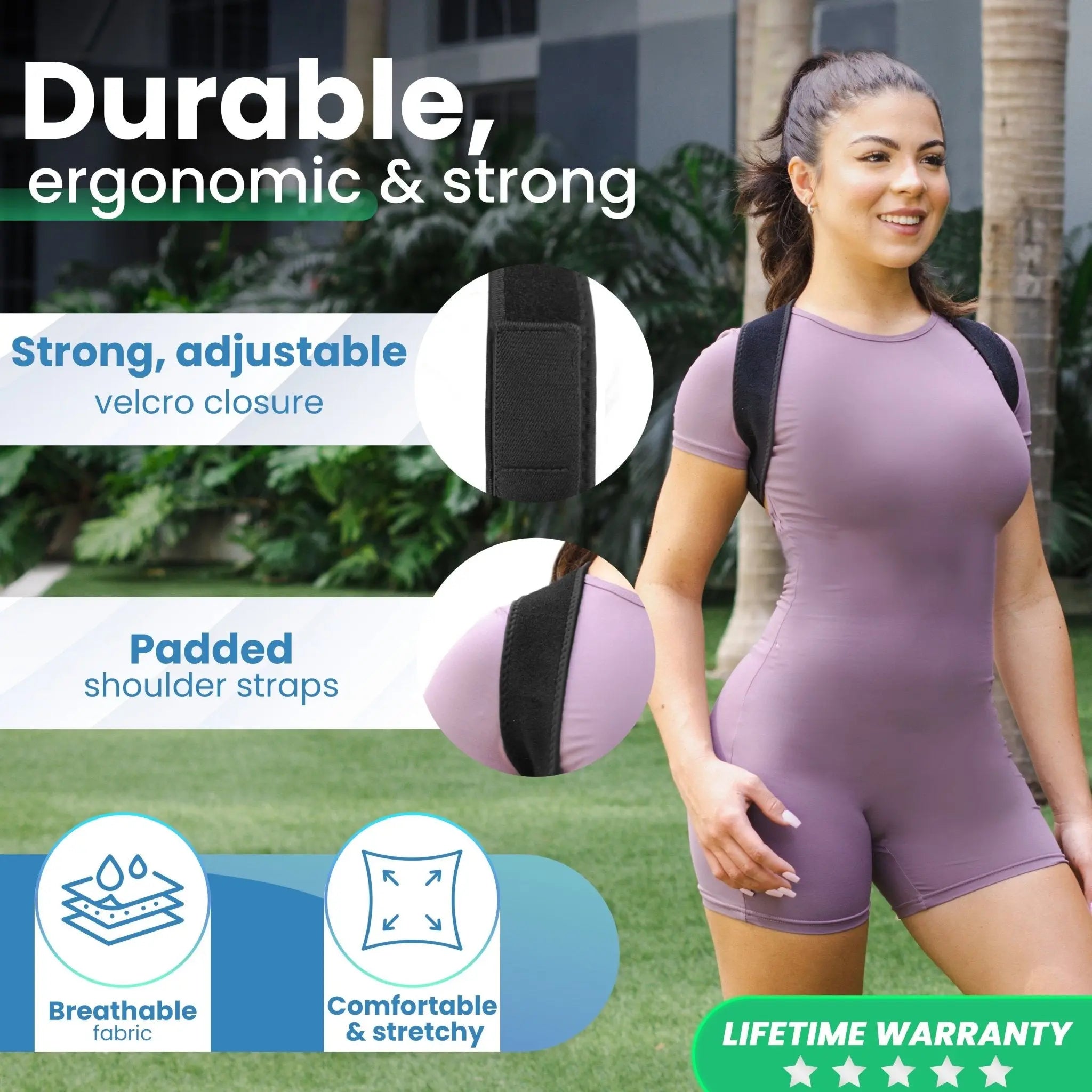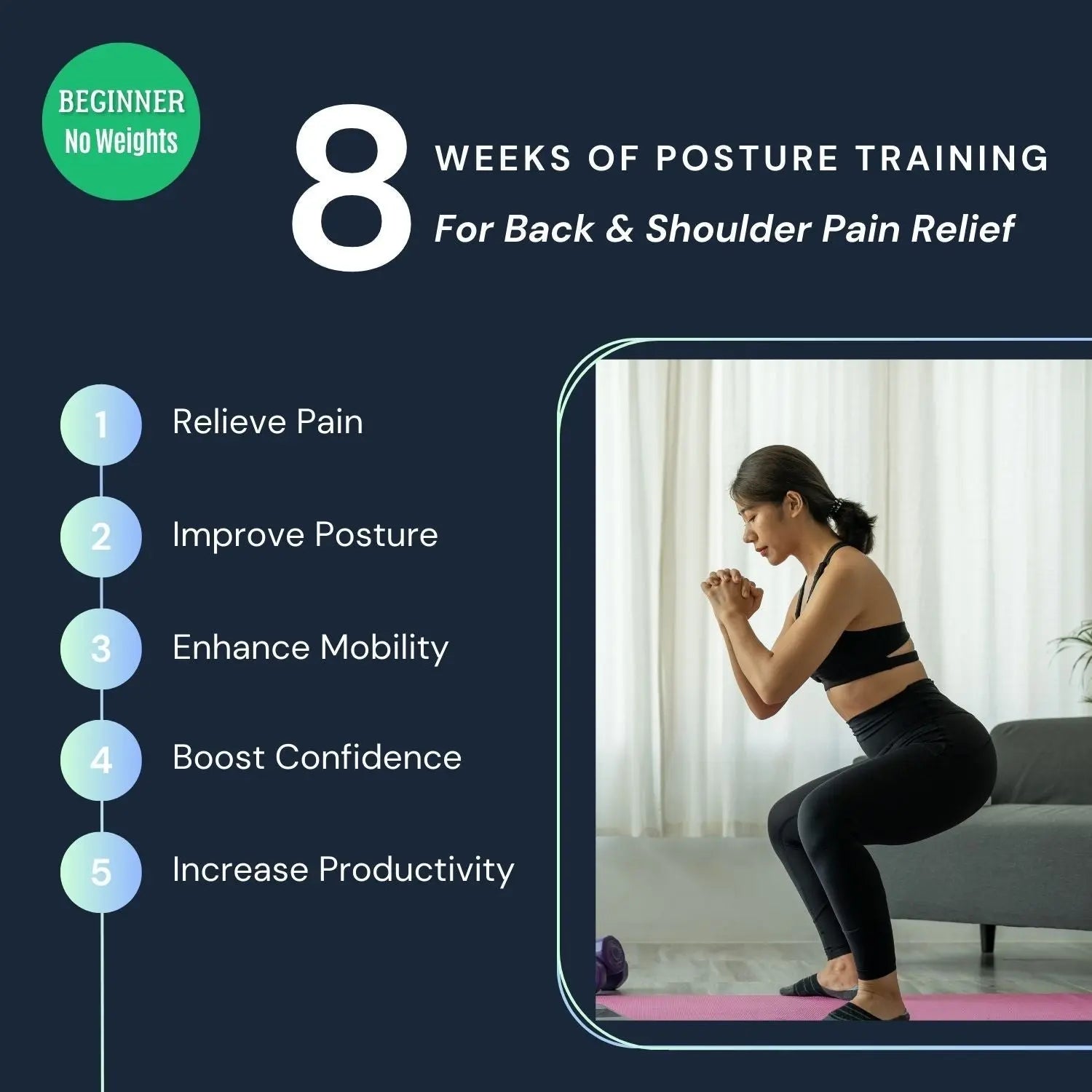Posture Corrector Before And After | Real Customers Stories With Results

Posture correctors are devices or garments used to assist people in maintaining proper body alignment and enhancing their posture.
They are designed to be worn on the upper body, such as the shoulders, back, or chest, and work by providing support to maintain a more upright and natural spine position.
The practical benefits of using a posture corrector become evident through real-world accounts and customer testimonials.
If you struggle with poor posture, envisioning yourself in a "before" and "after" scenario may encourage you to take action and consider purchasing a posture corrector.
That's why today, we will share the journey of our customers in correcting their posture and explain the value of your choice if you decide to invest in one.
Posture Corrector Before and After: A Comparison
Imagine this: by lunchtime, you've rounded your shoulders and slouched over your desk so much that your back begins to ache.
Consistently using a posture corrector produces visible results. You will start to feel better, and the backaches caused by poor posture will gradually diminish. It may finally put an end to the discomfort stemming from incorrect posture.
If you're still not convinced, we will now highlight a few common posture issues we have observed over the years and demonstrate the transformations that posture-correcting tools can achieve.
Before: The Posture Problem

The consequences of slouching have been accumulating for some time now. Your shoulders and back are constantly tense, and you often feel strain in your back.
However, your posture issues don't stop at slouching; there are several posture-related problems you may encounter, including:
1. Forward Head Posture
Forward head posture is characterized by the head leaning forward in relation to the shoulders. This is a common consequence of prolonged screen use.
In today's modern world, it's easy to develop the bad habit of hunching forward to view our phones and other gadgets. This leads to forward head posture, where the head is positioned in front of the shoulders instead of on top of them.
The additional strain on the head, neck, and shoulder muscles can result in tension headaches that can last for days, making it difficult to perform daily tasks.
2. Rounded Shoulders
Imagine the discomfort of having a sore upper back or the inability to reach items on high shelves. Slouching and poor ergonomics are major contributors to rounded shoulders. The upper back and shoulders appear to lean forward, a characteristic of this condition.
While rounded shoulders may not appear significant initially, they can have serious consequences. You may experience difficulty breathing as your chest becomes compressed.
The constant forward pull on your shoulders can irritate your upper back, neck, and shoulders, feeling like a constant burden on your shoulders.
Everyday activities, such as reaching for items on high shelves or extending your arms freely, can become challenging.
3. Hunched Back
Kyphosis, more commonly known as a hunched back, is a posture disorder characterized by excessive upper back curvature.
The causes of a stooped posture range from laziness to age-related spinal abnormalities, osteoporosis, or medical conditions. It tends to manifest subtly at first before becoming more noticeable.
One of the most evident and common consequences of a hunched back is discomfort and pain. Continual overuse of the muscles in your upper back and neck can lead to chronic discomfort, tension, and even pain.
Even routine activities like sitting for extended periods or standing up straight can become painful.
4. Lower Back Pain

It is crucial to recognize that poor posture can significantly contribute to chronic lower back pain, as it is a prevalent cause of this discomfort.
Spinal misalignment occurs when someone maintains a bad posture or slouches for an extended period. This misalignment can affect the vertebrae, discs, and muscles supporting the lower back.
Slouching and other postures that strain the lower back place additional stress on the spinal discs. To avoid exacerbating the pain, individuals may restrict certain movements and activities, resulting in reduced mobility and flexibility.
5. Reduced Lung Capacity
When considering the broader impact of poor posture on overall health and well-being, it's essential to acknowledge that slouching can reduce lung capacity.
Slouching causes the shoulders to round forward, leading to a collapsed chest. This compresses the chest cavity and places pressure on the lungs. Furthermore, slouching can impede the diaphragm's mobility, a critical muscle for respiration.
A constricted diaphragm limits its ability to expand and contract freely, hindering the ability to take deep, full breaths.
Reduced lung capacity can affect an individual's endurance and physical performance, whether they are engaged in strenuous physical activity or going about their daily lives.
After: The Transformation

After consistent use of a posture corrector, you may experience a remarkable transformation in both your posture and overall health. Let's delve into the outstanding results reported by numerous consumers:
1. Improved Posture
The most immediate and noticeable improvement is achieving a more upright posture while using a posture corrector. Users find that they can stand straighter, with their shoulders pulled back and their spine in a more natural alignment.
The once-prominent slouch and rounded shoulders gradually diminish, giving way to a more confident and composed appearance.
Additionally, the ingrained habit of poor posture tends to fade away. Wearing a posture corrector serves as a gentle reminder to maintain proper posture, and over time, many individuals find themselves naturally sitting up straight, even when not using the device.
2. Pain Reduction
Utilizing a posture corrector to support the lower back can alleviate the stress and pressure that may lead to pain in this area. Users have reported a reduction in chronic lower back pain as they work on achieving improved spinal alignment.
Furthermore, it aids in alleviating neck discomfort, which is common among individuals who spend prolonged periods hunched over computers.
Everyday activities, such as sitting or standing for extended durations, which may have previously caused pain or discomfort, become more manageable.
Users have reported increased comfort during exercise, leisure activities, and professional responsibilities.
3. Enhanced Mobility

Enhancing one's posture with the use of a posture corrector can have wide-ranging effects, including improved mobility. This means you'll encounter fewer difficulties when moving around and performing your daily tasks.
Improved posture promotes precise spinal alignment, thereby allowing your muscles and joints to achieve their full range of motion.
This increased mobility and flexibility will greatly benefit individuals who enjoy physical exercise, particularly exercises that challenge flexibility, balance, and range of motion.
4. Increased Energy
Improved posture offers numerous health advantages, and one of the most noticeable is a surge in energy levels.
An upright and relaxed posture reduces muscular fatigue by redistributing the workload on your muscles. Consequently, you'll have increased stamina to power through your day due to reduced muscular tiredness.
Working on your posture may lead to heightened energy and concentration levels. With your body correctly aligned, you'll find it easier to focus on tasks without expending extra energy to compensate for misalignment.
5. Confidence Boost
The use of a posture corrector to enhance your posture has a potent and often unexpected side effect—boosting your confidence.
Maintaining good posture through the use of posture correctors positively influences your body language. Standing tall with your shoulders back makes you appear more approachable, open, and self-assured to others.
The confidence gained by projecting a dominant and powerful presence in social situations can yield dividends in the quality of your interactions with others.
Enhanced confidence can improve your relationships and contribute to an overall sense of well-being.
Real-Life Stories and Photos
Elisabeth Hale
Elisabeth Hale, a 36 year-old accountant, had been dealing with the challenges of poor posture. Her job required long hours sitting at a desk and working on a computer.
As a result, she had experienced persistent neck, shoulder, and back discomfort and struggled to find a comfortable sitting position during her , and all this discomfort cast a shadow over her productivity and well-being.
Before Using the Posture Corrector:

- Constantly adjusting her sitting position at her desk.
- Perpetually hunched over her computer and had rounded shoulders.
- Had knots and muscle tightness around the upper back and shoulder areas.
- Feeling uncomfortable in her own skin.
One day, while searching for relief, Elisabeth stumbled upon the Cayatch posture corrector. With hopes in her heart, she decided to give it a try.
After Using the Posture Corrector:

Elisabeth began wearing the posture corrector for an hour a day during her work hours. To her amazement, she felt a significant relief in her shoulder and upper back areas within a matter of days.
Her once-rounded shoulders were straightened, and she was able to maintain an upright posture for extended periods while working on her computer.
As time went on, the back and neck pain that had overwhelmed her for so long gradually improved to the point she barely noticed it anymore.
Key Takeaways:
The regular use of the posture corrector had a transformative effect on Elisabeth's posture. With her newfound posture and relief from pain, Elisabeth is now able to focus on work and stay productive throughout the day.
Amy’s Transformation with the Cayatch Posture Corrector
Amy, a 31-year-old remote-working mom, was no stranger to the toll of poor posture. Between long hours at her desk and juggling household chores, she found herself constantly slouching, her shoulders rolling forward, and an ever-present tension settling in her neck and upper back.
Before Using the Posture Corrector:
-
Frequently shifting in her chair, trying to find a comfortable position.
-
Slouching over her laptop, worsening her rounded shoulders.
-
Experiencing daily tension and discomfort in her upper back and shoulders.
-
Struggling with fatigue and feeling less productive due to constant discomfort.
Determined to break free from the cycle of poor posture, Amy discovered the Cayatch Posture Corrector. Encouraged by the positive reviews and its adjustability, she decided to give it a try.

After Using the Posture Corrector:
-
Amy started wearing it for short sessions while working and doing light household tasks.
-
Within days, she noticed her shoulders naturally settling into a more upright position.
-
The tension in her upper back and neck gradually eased, making her feel more comfortable and energized.
-
Her posture improved so much that she caught herself sitting straighter—even when not wearing the brace.
The Takeaway:
With consistent use, Amy not only relieved her discomfort but also gained confidence in her posture. Now, whether she’s working remotely or managing her home, she moves with ease—free from the nagging aches that once held her back. Cayatch has become an essential part of her daily routine, and she couldn’t be happier with the results!
Frequently Asked Questions (FAQs)
How long does it take to see results from a posture corrector?
While you may notice an improvement in your posture within a few weeks of consistent use, the full benefits may not become apparent until several months of regular usage.
Can you correct years of bad posture?
Over time and with dedicated effort, it is possible to improve poor posture developed over the years.
Using a posture corrector in combination with exercises and increased awareness of your posture can lead to noticeable changes over time.
Can I use a posture corrector every day?
Using a posture corrector daily is recommended. In fact, wearing it regularly, especially during activities that tend to promote poor posture, can help maintain proper body alignment. It's advisable to start gradually and then increase the duration over time.
Does correcting posture hurt at first?
When initially using a posture corrector, some individuals may experience mild discomfort or muscle fatigue as their muscles adapt to the new alignment. However, it should not be excessively painful.
Conclusion
Utilizing a posture corrector to address postural issues can profoundly and positively impact your life. While a posture corrector is beneficial, it's important to remember that exercises, stretches, and heightened awareness of your posture are also essential for long-term success.
Improving your posture and overall health is a gradual process that may take time, but the rewards are well worth the effort. Paying attention to your posture can enhance your well-being, comfort, and self-esteem, all contributing to a happier and more fulfilling life.























